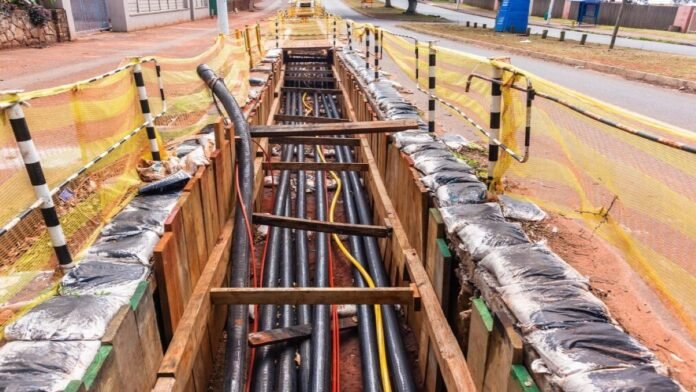Soil properties are a critical factor that influences cable performance and longevity. Its thermal properties, specifically conductivity and resistivity, directly impact heat dissipation, a crucial factor in preventing cable overheating and ensuring optimal operation. Thus, accurate soil testing is paramount for informed cable design, installation, and maintenance, ultimately enhancing the reliability and efficiency of underground power systems.
Table of Contents
1. Uncovering the Soil’s Thermal Landscape
Soil subsurface profiling by undertaking comprehensive Soil Testing is crucial for understanding the thermal dynamics of underground cable environments comprising sand, clay, silt, gravel, organic materials, water, and air. Techniques like thermal conductivity probes and borehole measurements enable engineers to create detailed thermal profiles of the site.
That helps assess how the soil affects underground cables’ ability to dissipate heat. For example, high thermal conductivity means efficient heat transfer from the cable, reducing the risk of cable overheating and enhancing electrical transmission reliability.
The results help underground cabling project managers make informed decisions about ascertaining routes, determining the optimal depths, and conducting accurate thermal modeling. By uncovering the thermal landscape, engineers can effectively mitigate risks associated with heat transfer, ensuring the efficient and reliable operation of underground cable infrastructure over its lifespan.
2. Provides Insights Into Bedding Material Optimization
By understanding the soil’s thermal properties, geotechnical engineers can select bedding materials and design underground cable structures that complement the soil’s characteristics, enhancing heat dissipation and overall cable performance. The strategic placement of thermal conductive bedding materials is crucial in improving heat dissipation around underground cables.
The materials create a thermal bridge between the cable and the surrounding soil, facilitating the safe operation of cables at higher currents without exceeding their maximum allowable temperature limits. Accurate thermal characterization of bedding materials ensures optimal performance and extends the cable infrastructure’s longevity by mitigating thermal stress and potential overheating risks.
Engineers rely on this data to effectively select and position bedding materials, maximizing system efficiency and reliability. That helps engineers mitigate operational risks and extend the lifespan of underground cable infrastructures. However, it’s crucial to ensure the use of quality and certified materials.
3. Provides Insights in Predicting Cable Behavior
Thermal modeling plays a critical role in predicting the behavior of underground cables, ensuring their reliability and longevity. Engineers leverage advanced software that integrates precise soil thermal data they acquire through thermal conductivity and resistivity testing methods. The data enables simulations of temperature distributions along cables, identifying potential hotspots and thermal stress points.
Engineers can optimize cable design, spacing, and installation methods by understanding soil thermal properties. The proactive approach mitigates risks of overheating and enhances operational efficiency. That ensures the sustained performance of underground cable networks in diverse environmental conditions.
Also, thermal modeling based on soil data allows for predictive maintenance, identifying potential hotspots before they become critical issues. Thus, soil thermal testing forms the cornerstone of effective thermal modeling strategies for robust cable infrastructure.
4. Enhances Regulatory Compliance and Sustainability in Underground Cabling
Understanding soil thermal properties is essential for ensuring regulatory compliance and sustainability in underground cable infrastructure. Engineers rely on this knowledge to adhere to industry standards that govern cable temperature limits, installation practices, and environmental impact thresholds.
By optimizing cable design and installation according to soil characteristics, such as thermal conductivity and resistivity, engineers can mitigate risks of overheating and energy loss. The approach enhances underground cables’ operational efficiency and reliability and contributes to sustainable energy practices by reducing environmental impacts. Thus, soil thermal testing is pivotal in promoting compliance with regulations and fostering environmentally responsible infrastructure development.
In conclusion, soil testing for its thermal resistivity, conductivity, and other parameters is critical in designing safe and efficient underground power cables. These tests inform decisions on cable routing, burial depths, and the selection and design of bedding materials to create a thermal bridge. However, identifying experts in soil thermal dynamics and geotechnical engineering is essential for optimizing underground cable design and installation, ensuring safe operation and high performance while adhering to regulatory standards. By leveraging accurate soil data, engineers manage heat effectively, mitigate cable failure risks, and improve the overall reliability of underground power systems, fostering sustainable and efficient energy infrastructure development.








